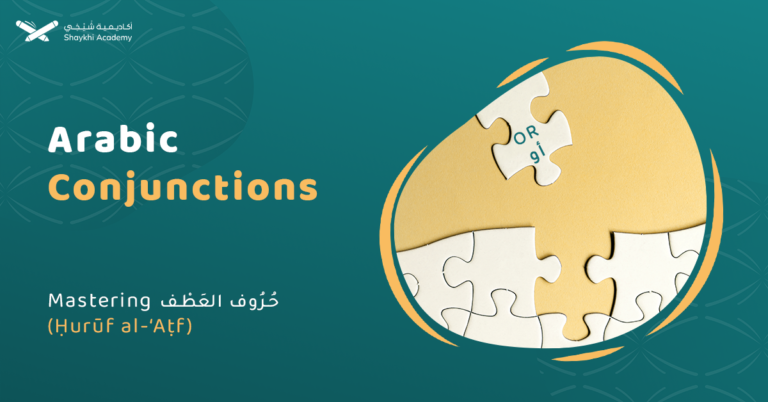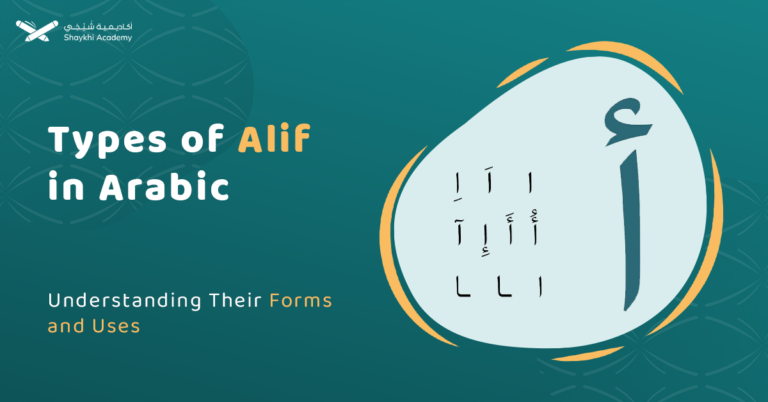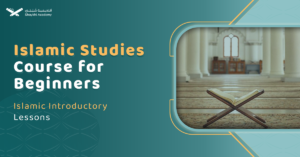Tajweed is a science of the Quran that specializes in improving recitation, correcting it, pronouncing the letters correctly, and reciting the verses as our Prophet Muhammad (peace be upon him) used to recite them. Allah Almighty revealed the Quran to His Prophet and commanded His servants to preserve, recite, understand, and act upon it.
Many Muslims focus on the proper interpretation of the Quran and neglect the proper recitation, claiming that the Quran was revealed to be acted upon, which is a grave mistake and a heinous interpretation. Allah Almighty recited the Quran with Tajweed to Gabriel, and Gabriel recited it with Tajweed to Muhammad (peace be upon him), and the Prophet recited it with Tajweed to his companions, until it reached us with Tajweed generation after generation.
Thus, reciting it with Tajweed is an emulation of Allah, His Messenger, and the righteous predecessors, a form of worship, and adherence.
What is Tajweed in Arabic?
In Arabic, Tajweed means improvement and perfection(التحسين والإتقان). To master something means to do it excellently.
Theoretically, Tajweed is a science that deals with the rules of correcting recitation.
هو العلم الذي يبين الأحكام والقواعد التي يجب الالتزام بها عند تلاوة القرآن الكريم
Quran Tajweed Meaning:
Tajweed is the science of Quranic recitation that ensures the correct pronunciation and articulation of its verses, following the example set by Prophet Muhammad (peace be upon him). Tajweed encompasses rules that govern every aspect of recitation, from the pronunciation of letters to the proper elongation and stops.
Mastering Tajweed is crucial for Muslims to recite the Quran accurately and gain deeper insights into its meanings, thereby fulfilling a fundamental act of worship and preserving the Quran’s sanctity.
Alphabet in Tajweed:
It is well known that the Arabic alphabet consists of 28 letters, but according to Tajweed scholars, it comprises 29 letters.
This is because they differentiate between the alif (ألف) and the hamza (همزة). They place the alif after the letter lam (ل) in the alphabet, associating it with it.
This is because both the alif and the hamza have different articulation points.
The articulation point of the alif comes from the same point as the other three elongated letters, from the empty space that extends from above the larynx to the lips, with the vocal cords opening when pronouncing it. Meanwhile, the articulation point of the hamza is from the deepest part of the throat, with the vocal cords tightly closed when pronouncing it.
Importance of Tajweed:
Learning the Quran with Tajweed is indeed an act of worship through which a believer draws closer to their Creator. The Quran will come on the Day of Resurrection as an intercessor for its companion. Therefore, learning Tajweed and caring for this knowledge is essentially a care for the Quran and a commitment to performing it accurately according to the way the Prophet (peace be upon him) recited it to his companions. The importance of learning Tajweed can be summarized as follows:
1. A Primary Means to Understand the Quran’s Meanings:
Tajweed is an essential tool for understanding the meanings of the Quran, reflecting on its verses, and recognizing its rulings.
2. Great Status and Reward for Proficient Reciters:
A reciter who masters the rules of Tajweed holds a significant status and receives a great reward. The Prophet (peace be upon him) said,
“The one who is proficient in the recitation of the Quran will be with the honorable and obedient scribes (angels), and the one who recites the Quran and finds it difficult will have a double reward.”
3. Complete Reward for Recitation:
A Muslim gains complete reward when reciting the Quran according to the correct rules of Tajweed.
4. Perfect and Complete Memorization:
Proper recitation is part of the complete and perfect memorization of the Quran. This means reciting it as it was revealed, as conveyed by the Prophet (peace be upon him), free from melody alterations or mistakes that could distort the meaning.
Thus, learning Tajweed is not only about recitation accuracy but also about deeply engaging with the Quran and ensuring its meanings are preserved and understood correctly
History of Tajweed:
Tajweed Originating from the need to preserve the Quran’s purity amidst linguistic variations, Tajweed evolved into a comprehensive discipline during the early Islamic era.
1. Oral Tajweed Phase:
The Quran was revealed in Arabic with Tajweed, meaning it was recited with its proper rules. The independent composition of the science of Tajweed began in the fourth century of the Hijri calendar. Before that, Tajweed was taught orally alongside the Quran.
The Prophet (peace be upon him) used to recite the Quran with Tajweed naturally, without needing rules because he was a pure Arab, and so were his companions.
2. Islam Spread Lead to Tajweed Science:
However, as non-Arabs began to enter Islam, errors in the Arabic language and thus in Quranic recitation began to appear. The companions noticed this and feared the loss of correct Quranic recitation.
The companions started to establish rules for the science of Tajweed. It is the science that explains the rules and regulations that must be adhered to when reciting the Quran, according to what Muslims received from the Messenger of Allah (peace be upon him), by giving each letter its due, in terms of articulation, characteristics, and movement, without affectation or excessiveness.
A student would recite the Quran to their teacher repeatedly until they mastered the recitation and perfected the performance.
The first to establish the scientific rules of Tajweed were the scholars of recitation and language at the beginning of the era of written works.
It is said that the one who established these rules was (الخليل بن أحمد الفراهيدي) (Khalil ibn Ahmad al-Farahidi), and some say it was (أبو الأسود الدؤلي) (Abu al-Aswad al-Du’ali), while others mention (أبو عبيد القاسم بن سلام) (Abu Ubaid al-Qasim ibn Sallam).
3. Introduction of dots and diacritical marks
This need arose after the numerous Islamic conquests brought many non-Arabs into Islam, leading to a mix of non-Arabic and Arabic tongues, causing pronunciation errors to become widespread.
The Muslim leaders feared that this would lead to distortions in the Quran, so they worked to prevent this and its causes. They introduced dots and diacritical marks to the Quran, which had been absent in the Uthmanic script, and then established the rules of Tajweed to ensure that every reader adheres to them when reciting any part of the Quran.
The earliest authors in the science of Tajweed:
The first person to author a work on Tajweed was (أبا مزاحم الخاقاني) (Abu Muzahim al-Khaqani), who passed away in 325 AH, at the end of the third century Hijri.
Subsequent compositions followed, such as:
- (السعيدي علي بن جعفر) (Al-Sa’idi Ali ibn Ja’far) (d. circa 410 AH), authored “التنبيه على اللحن الجلي واللحن الخفي” (“The Warning on Clear and Hidden Mistakes”).
- (مكي بن أبي طالب القيسي) (Maki ibn Abi Talib al-Qaisi) (d. 437 AH), wrote “الرعاية لتجويد القراءة وتحقيق لفظ التلاوة” (“The Care for Perfecting Recitation and Realizing the Pronunciation of Recitation”).
- (الداني) (Al-Dani) (d. 444 AH) authored “التحديد في الإتقان والتجويد” (“The Specification in Perfection and Tajweed”).
By the thirteenth century Hijri, more than 100 books and manuscripts on the science of Quranic Tajweed had been recorded.
Types of Tajweed Rules:
Tajweed has various types and numerous, intricate, and multifaceted rules. Here, we mention some of them:
1. Rules of Starting (أحكام الابتداء):
This refers to the principles for beginning the recitation of the Quran after stopping or pausing. If the recitation starts after stopping, the reader must begin with seeking refuge (الاستعاذة), and then the basmala (البسملة), if starting at the beginning of a surah. If starting in the middle of a surah, the reader has the choice to recite the basmala or leave it after seeking refuge.
2. Rules of the Silent Noon and Tanween (أحكام النون الساكنة والتنوين):
These rules apply when the silent noon or tanween meets any of the Arabic letters. Tanween, in essence, is a silent noon; thus, they are grouped together in the ruling. The four rules for the silent noon and tanween are: Izhar (الإظهار), Idgham (الإدغام), Ikhfa (الإخفاء), and Iqlaab (الإقلاب).
3. Rules of the Silent Meem (أحكام الميم الساكنة):
The silent meem has specific rules. It is a single, unique meem, not repeated, and has several rulings associated with it.
4. Articulation Points of Letters (مخارج الحروف):
This science is connected to Tajweed and deals with the correct way of articulating the letters of the Quran. It is of immense importance due to its relation to pronunciation and the details involved.
5. Rules of Elongation (أحكام المدود):
Elongation is divided into several types, such as connected elongation (المد المتصل), disconnected elongation (المد المنفصل), and obligatory elongation (المد اللازم). This chapter is one of the major areas of Tajweed science.
6- Quran Reading Rules and Mannars:
The recitation of the Quran has some basic rules such as the basmala (البسملة). Scholars have mentioned two main rulings regarding the basmala while reciting:
If the reciter starts the recitation from the beginning of a surah, they must say the basmala, except in the case of Surah Bara’ah (التوبة), where the reciter does not begin with the basmala.
If the reciter starts from the middle of a surah, they have the option to start with the basmala or begin directly.
7- Sukoon in Tajweed:
A silent letter in the Quran should be pronounced without any of the three vowel marks, without exaggeration. This occurs frequently in the Quran, and Tajweed scholars have outlined specific rules for some of these letters, such as the silent noon (النون الساكنة) in the word (الْأَنْهَارُ).
8- Qalqalah in Tajweed:
This involves the tongue vibrating and moving when pronouncing qalqala letters, especially if they are silent. This vibration produces a strong sound for the letter. Examples include the silent qaf (القاف) in (مقعد), the silent dal (الدال) in (صدق), and the silent qaf (القاف) in (مقتدر) in the verse: (فِي مَقْعَدِ صِدْقٍ عِنْدَ مَلِيكٍ مُقْتَدِرٍ) (Al-Qamar: 55).
9- Noon And Meem Mushaddad Rules:
This represents two identical letters, the first being silent and the second having a vowel mark, merged into one stressed letter, written as (نّ) or (مّ). The ruling is to pronounce it with a nasal sound (ghunnah) for two beats, such as the noon (ن) in (فلنقصن) in the verse: (فَلَنَقُصَّنَّ عَلَيْهِمْ بِعِلْمٍ) (Al-A’raf: 7).
10- Idgham:
This rule, meaning “merging,” is applied often, such as merging the silent noon or tanween with certain following letters. An example is merging the noon (ن) with the meem (م) in the verse: (وَيُسْقَى مِن مَّـاءٍ صَدِيدٍ) (Ibrahim: 16).
11- Madd Rules:
There are many types and cases, such as the obligatory connected elongation (المد الواجب المتصل) in the word (شُفَعَآءَكُمُ), which is one of the well-known types.
12 Iqlab Rules:
This occurs when the letter (ب) follows a silent noon (النون الساكنة) in one word, converting the noon to a meem sound, as in the verse: (قَالَ يَا آدَمُ أَنبِئْهُم بِأَسْمَائِهِمْ) (Al-Baqara: 33).
13- Ghunnah Rules:
Ghunnah is a nasal sound embedded in the letters noon (ن) and meem (م), pronounced for two beats. An example is the nasal sound in the meem (م) in the verse: (هَمَّتْ بِهِ) (Yusuf: 24).
How To Learn Tajweed?
To learn the rules of Tajweed you’ll have to recite and repeat as much as you can. That’s the rule and nothing can replace it. You know how when you read a page from Quran for the first time you take much more time than when you read a page that you’ve read before, that’s exactly how repeating and practicing help.
Know Your Goal
Remember that our prophet peace be upon him didn’t just read the Quran but LIVED it. The key to actually benefit from the Quran is to check your heart by asking yourself, why am I reading it? Is it just to get some knowledge and rules and then leave it? Or to get the great rewards Allah promised? And be honest with yourself.
Renew Your Intention
It is difficult for an adult to learn Tajweed rules. It will acquire you the WILL to do so. Despite your hard efforts, You may get the feeling of giving up when you fail on making the right sounds, so all you have to do to overcome that negative feeling is to remind yourself of the reason WHY you’re doing so, and that this is what our prophet peace be upon him encouraged us to do.
It’s Okay to Make Mistakes
A lot of people think that it is haram to read Quran if you don’t know how to read it correctly. But this is not only false but worse, it’s like you’re telling people to stop even try to read the Quran
Allah Almighty said in surah At-taghabun Ayah 16, “So be mindful of Allah to the best of your ability, hear and obey, and spend in charity—that will be best for you. And whoever is saved from the selfishness of their own souls, it is they who are ˹truly˺ successful”. So, don’t be afraid to make mistakes while learning rules of Tajweed. Even if you were really bad though, because if you don’t try and make mistakes then how will you learn?
The Difficult Letters And Words
If you face difficulty with some letters sounds, all you have to do is put some more effort into practicing those sounds, and once you learn how to produce those sounds correctly, you’ll be able to read all the words correctly.
Keep Practicing
You don’t need a specific time or place to practice rules of Tajweed, It only needs some attention of yours. You can practice on your way to work, while watching tv, or even before you sleep.
Listen And Imitate
Listen to Quran as much as you can, and for beginners, it’s better to choose slow Quran recitations such as Al Hasry, Listen and repeat after him.
Take A Rule by Rule
When you pick a rule to learn, practice it well and master it before moving to the next rule because you’ll find it difficult if you try to learn more than one rule at once, and you may as well get bored.
Learn to Recite the Quran With Tajweed
Learning the rules of Tajweed is a communal obligation (فرض كفاية); if some Muslims fulfill it, the sin is lifted from others. However, applying these rules during Quran recitation is an individual obligation (فرض عين) for every Muslim reciting the Words of Allah.
Tajweed is a vital science that must be studied and its rules and principles mastered. In today’s technological age, with the availability of the internet, learning has become easier than ever.
There are platforms for learning Quranic Tajweed that provide opportunities for distance learning. Whether you are at home or at work, you only need to enroll in an online academy such as Shaykhi Academy for Quranic Tajweed.
You can also obtain certification in recitation, Tajweed, and memorization at your convenience with skilled and proficient teachers. The duration for obtaining certification (Ijaza) depends on your personal effort and commitment to the required curriculum during the lessons.
Learning Tajweed with us will be easier and faster. May Allah make us among the people of the Quran, who are His special ones.
Unlock the Path to Quranic Mastery with Shaykhi Academy!
Are you seeking the finest Quranic education right from the comfort of your home? Look no further! Shaykhi Academy stands out as a premier online Quran learning platform, dedicated to providing exemplary education to both children and adults.
Why Choose Shaykhi Academy?
- Connect with highly qualified native tutors.
- Flexible scheduling to suit your busy lifestyle.
- Affordable classes tailored for all levels.
- Accessible from anywhere around the globe.
Discover Our Range of Courses:
- Arabic Noorani Qaida: Lay a solid foundation for Quranic studies.
- Online Quran Classes for Kids: Engaging lessons for lifelong learning.
- Tajweed Rules for Kids: Learn to recite with confidence.
- Quran Hifz for Kids: Step-by-step guidance to memorize the Quran.
- Quran for Adults: Introduce yourself to Quran reading and Tajweed rules.
- Online Arabic Courses: Master the language of the Quran.
- Islamic Studies: A wide range of topics related to Islam, including theology, law, Quranic studies, and Hadith.
Don’t Miss Out on Your Chance to Excel! Whether you’re a beginner or seeking advanced knowledge, Shaykhi Academy can guide you! Book your free trial now!

CONCLUSION
Tajweed is a science pursued for the pleasure of Allah, and learning it is a great virtue that every Muslim strives for. We have learned together the meaning of Tajweed in the Arabic language and its significance in Quranic recitation.
We also took a brief look at the history of Tajweed, recognizing that the Companions received the Quran with Tajweed directly from the Prophet (peace be upon him). After the Islamic conquests, the Companions realized the necessity of documenting a complete science of Quranic Tajweed.
Muslims began documenting it from that time. We also discussed some basic rules of Tajweed generally and delved into the most important rules with simple examples for each.
May Allah benefit us all with this knowledge and place it in the scale of our good deeds.














































